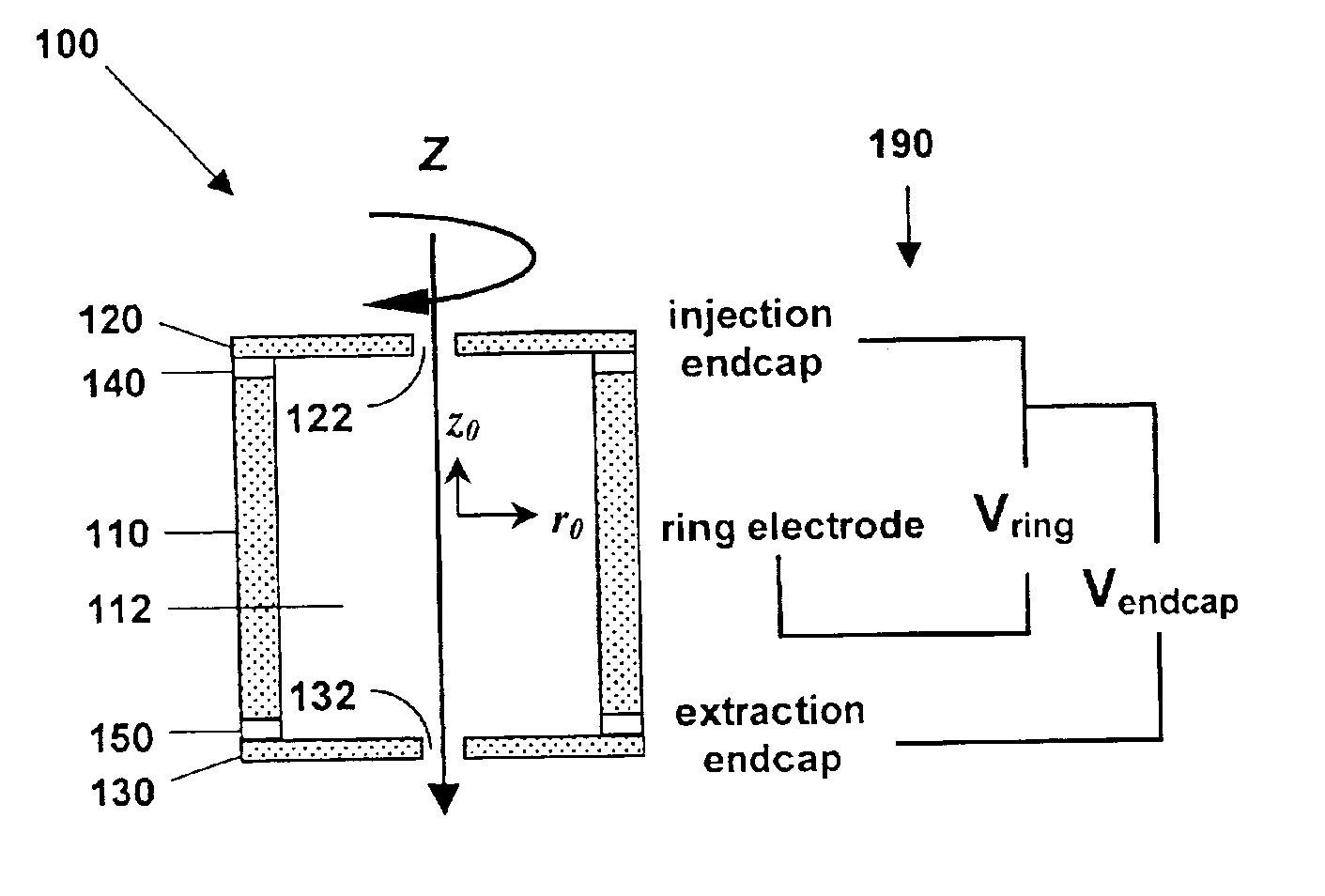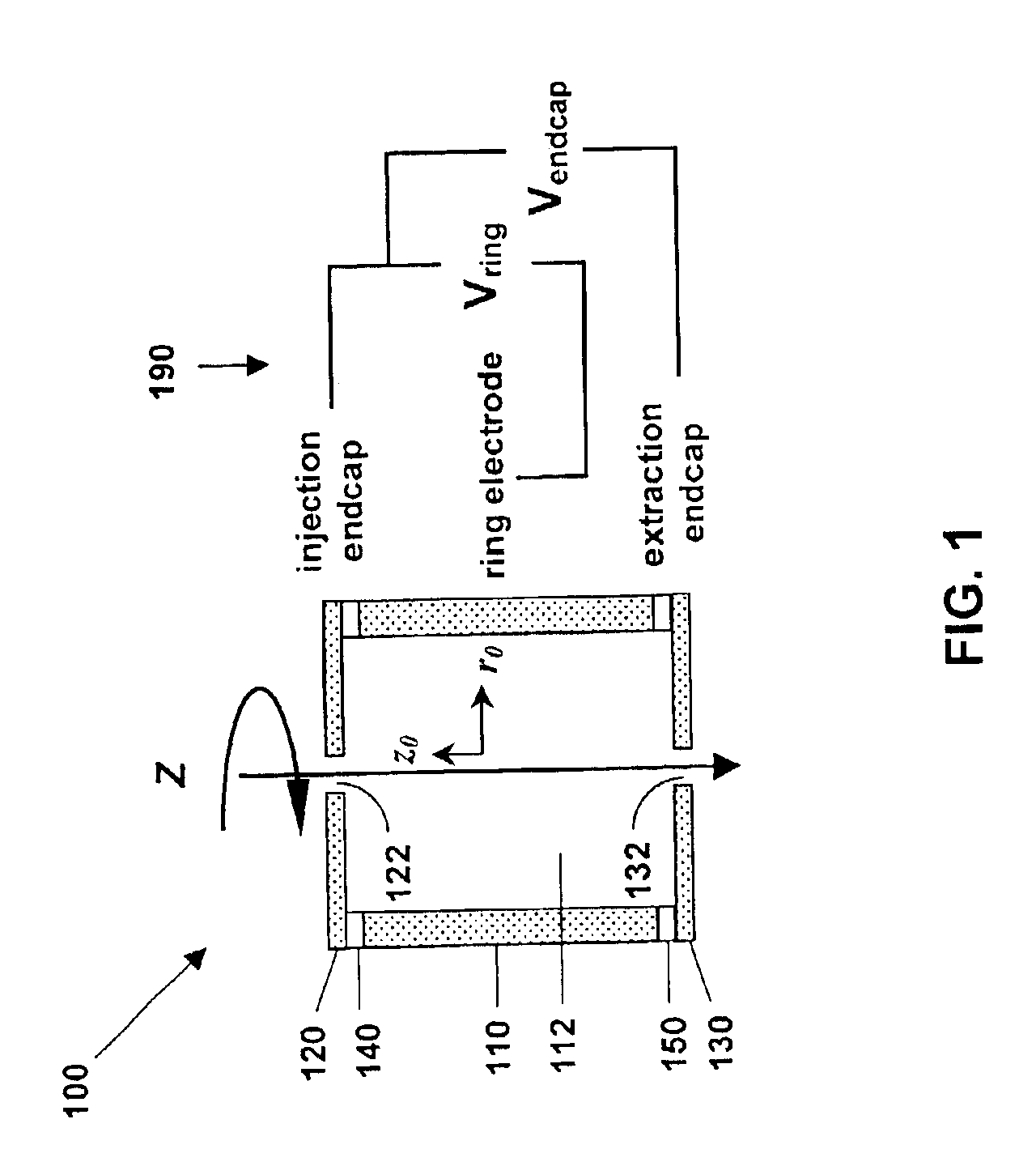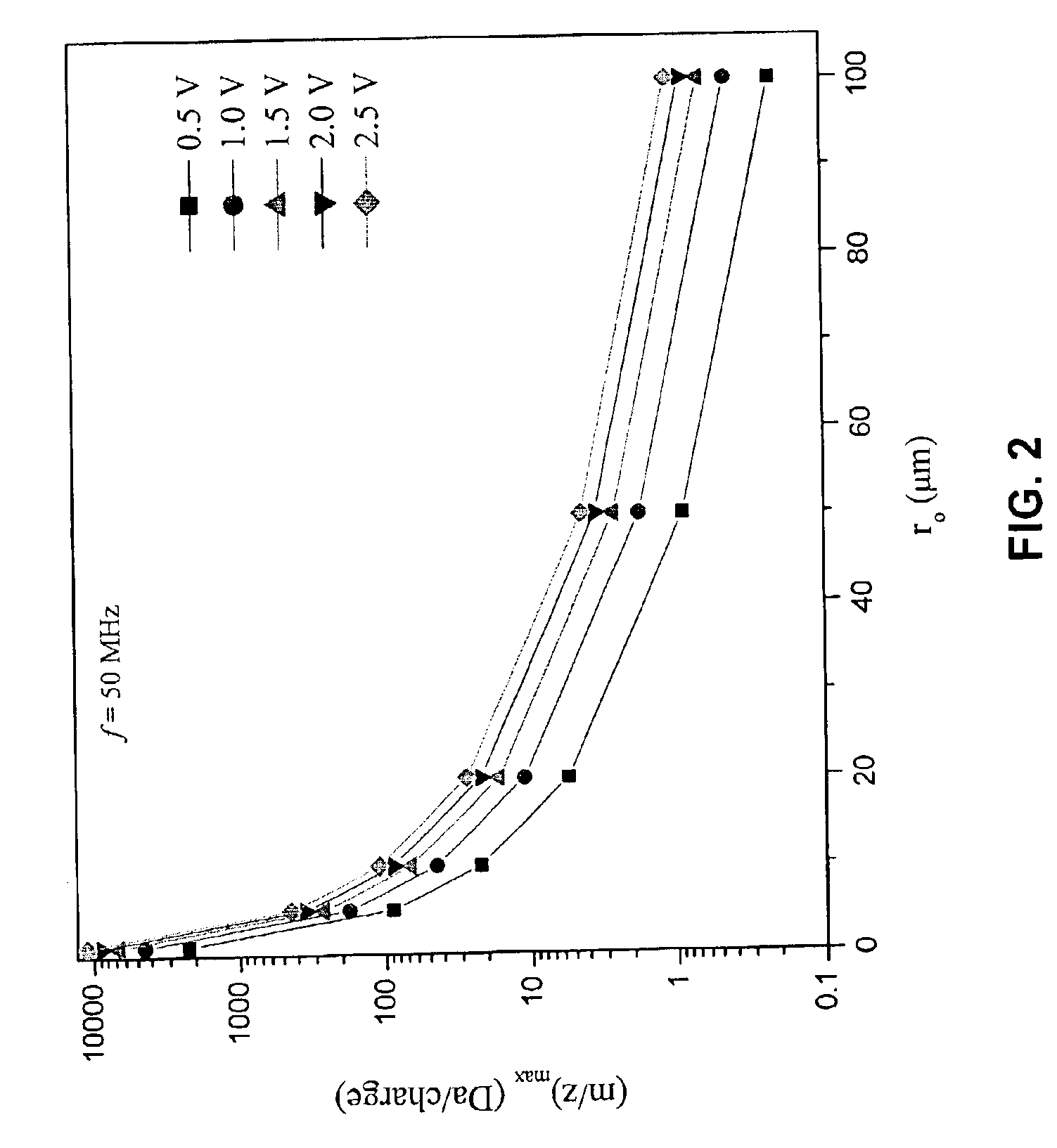Microfabricated cylindrical ion trap
a cylindrical ion trap and microfabricated technology, applied in the field of microfabricated cylindrical ion traps, can solve the problems of increasing the cost of accelerating voltage, reducing the efficiency of accelerating voltage, and difficulty in analyzing mixtures
- Summary
- Abstract
- Description
- Claims
- Application Information
AI Technical Summary
Benefits of technology
Problems solved by technology
Method used
Image
Examples
Embodiment Construction
The present invention comprises a microfabricated cylindrical ion trap, with trap dimensions of order one micrometer (i.e., generally from about ten microns to sub-micron in linear dimension). The microfabricated CIT can be used both for mass analysis and to store ions (e.g., as in quantum computing applications, atomic / molecular physics experiments, etc.). When used as a mass spectrometer, the microfabricated CIT can have a high resolution and mass range. A massively parallel array of such CITs can provide greater than 106 individual mass analyzers in a one cm2 area for high sensitivity. The microfabricated CIT provides a simple geometry that can be fabricated using surface micromachining techniques and integrated on-chip with an ion source, ion detector, and the control circuitry. In particular, solid-state signal preamplifiers and rf drive electronics can be fabricated in silicon with the CITs built into the back-end metallization of the device electronics. Vacuum and power requi...
PUM
 Login to View More
Login to View More Abstract
Description
Claims
Application Information
 Login to View More
Login to View More - R&D
- Intellectual Property
- Life Sciences
- Materials
- Tech Scout
- Unparalleled Data Quality
- Higher Quality Content
- 60% Fewer Hallucinations
Browse by: Latest US Patents, China's latest patents, Technical Efficacy Thesaurus, Application Domain, Technology Topic, Popular Technical Reports.
© 2025 PatSnap. All rights reserved.Legal|Privacy policy|Modern Slavery Act Transparency Statement|Sitemap|About US| Contact US: help@patsnap.com



